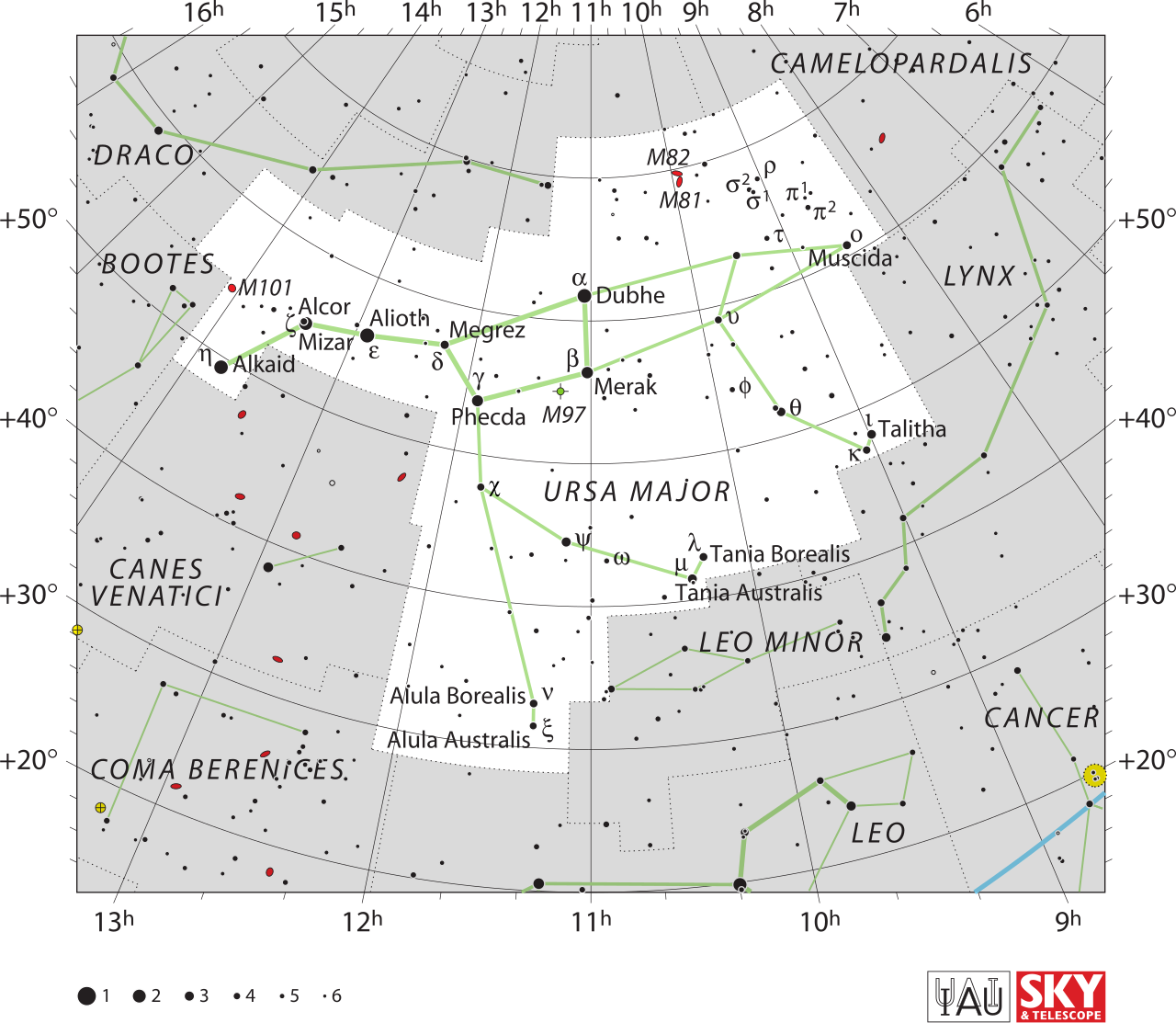Things look WAY different when you don't have glaring city lights obscuring all the other stars around it.
When you look up, you only see the stars that capitalism hasn't stolen from you yet.
Memes! A way of describing cultural information being shared. An element of a culture or system of behavior that may be considered to be passed from one individual to another by nongenetic means, especially imitation.
Things look WAY different when you don't have glaring city lights obscuring all the other stars around it.
When you look up, you only see the stars that capitalism hasn't stolen from you yet.
Actually it looks more or less the same if a bit brighter, you can't see a bear there no matter how hard you try.
That's because the 'dipper' is only a part of the bear - ursa major proper has quite a few more stars in it. Though, not disagreeing, it's a real stretch to describe it as truly "bear shaped" (Ursa Minor is even less reasonable)
It kinda helps if you include the whole constellation:
https://starwalk.space/gallery/images/ursa-major/1920x1080.jpg
Kinda being a key word
In what language does "bear" translate to "dipper?"
In several languages that constellation is known as the "big bear". No idea about the reason for the split.
I think modern society has taken to calling it mostly the dipper since there’s too much light pollution for most people to see the extra stars that turn it into a bear.
Yes. Though, American society. Maybe other English speakers.
Dipper is one of the craziest most obscure choices of name, too, IMO.
Here's the whole thing https://en.wikipedia.org/wiki/Ursa_Major
The photo on Wikipedia

and the one with the actual "bear" outlined. Its still a real stretch, imo. 
I actually think they just have that wrong. If you include the stars marked in red at the front as the head, and change the body shape to include the red ones at the back to make it bulkier, you get something much more obviously bear shaped.
The constelations were first passed from generation to generation orally, and at a time when you could actually see more than just the brightest stars, so the original ideas have been lost over time and we've received a much changed, and less sensible version of them, even after they started being recorded on paper.
It's also from before we had a single list of constellations that were each a single object, Wikipedia points out that there are versions where the 3 "tail" stars are actually 3 cubs following mama bear, or 3 hunters tracking the bear, and so on. Trying to say that it makes more sense to add stars to complete the shape is a modern take that's limited to your current understanding of the constellation as a single figure.
So the Greeks giving the bear a tail doesn't mean somebody since then got that grouping wrong, it means the Greeks convinced themselves that the 3 stars were part of the bear (surely because the full dipper was too important to split) and had to be a tail rather than cubs or hunters.
Sure, but there had to be a reason it was seen as a bear rather than, say, a horse. In either case, three stars "following" it could be interpreted in a variety of ways; a tail, three young, hunters, or something else entirely. I'm suggesting the the stars above give the bear a more bearlike than equine appearance and might have been involved originally.
Your point about the Greeks convincing themselves the trailing stars are a tail speaks to the point I was making about the descriptions being passed diwn mostly orally, so there's no reliable source anymore. Ultimately we'll probably never know for certain what the first humans to pick out constellations thought they looked like, or exactly how those ideas changed over time, but it is fascinating to think about.
I'm suggesting the the stars above give the bear a more bearlike than equine appearance and might have been involved originally.
And I'm saying you want it to look more like a bear because that's your idea of it today. It is a bear because it has been a bear for over 10,000 years. The 3 extra stars were not part of the bear itself, but still part of the constellation as a whole, and they were never separated because the dipper shape is recognizable and important. Those other stars you want to add were not part of it - as far as anyone can tell from the surviving versions. It's not a mistake, it's not something that was forgotten. Your suggestion is an addition that was never there, because you want to fix it to your modern underestanding of the constellation.
In Italian we use both minor/major she-bear or big/small carriage. It definitely looks more like a carriage than a bear.
Ursa major IIRC, and there is also the Ursa minor ofc.
the dipper is only part of the actual constellation, the dipper itself is instead an "asterism", which basically means constellation but less arbitrary and nonsensical.
an asterism is any pattern in the stars, while constellations are standardized and historical and generally only useful for categorizing sections of the sky for astronomers.